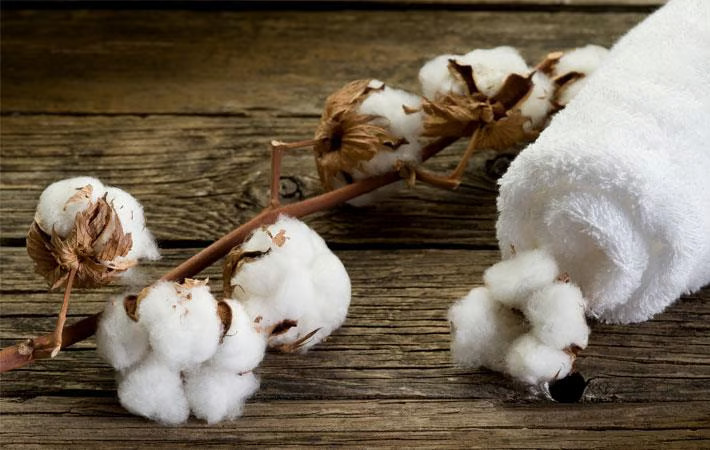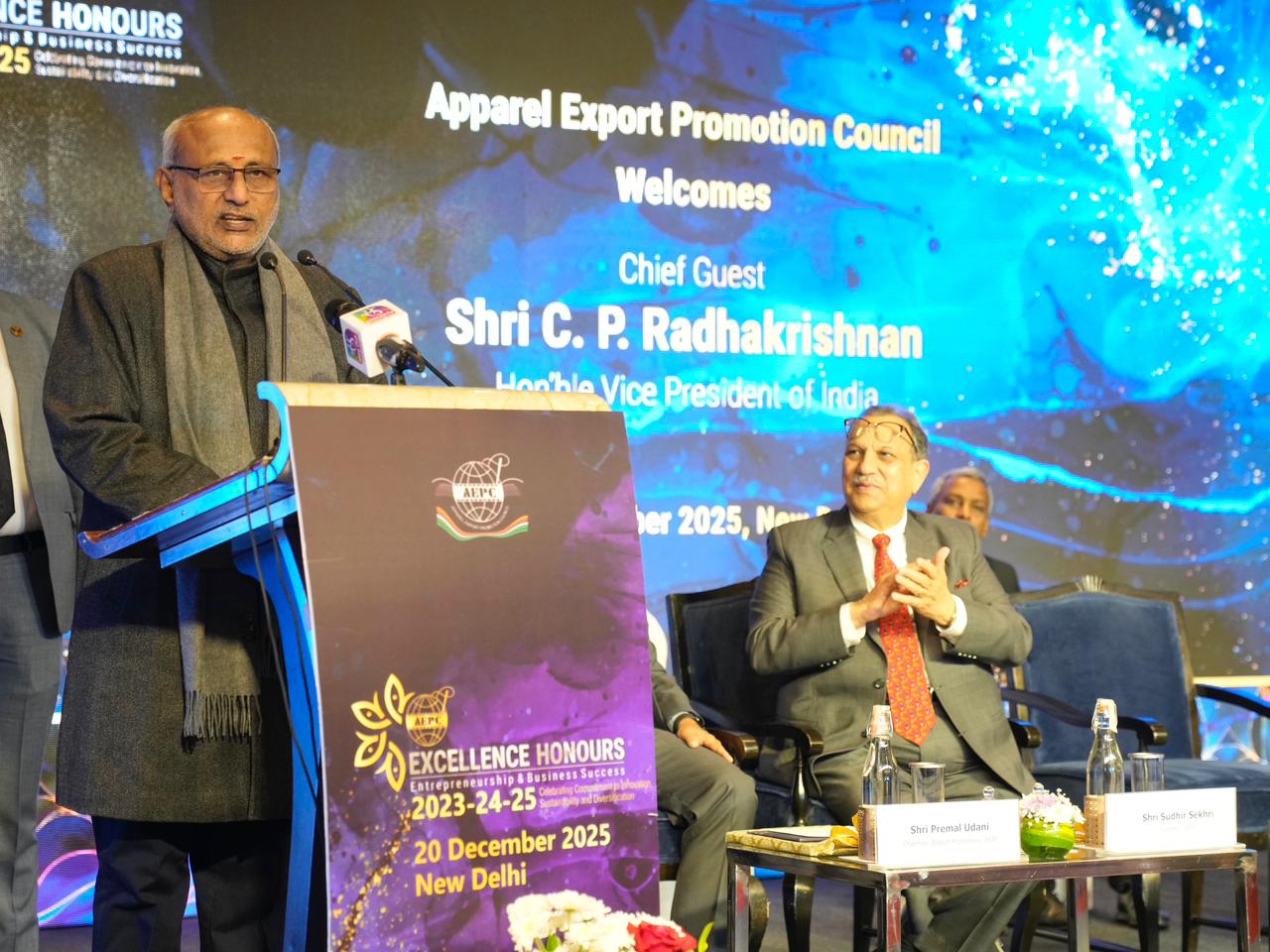FW

The Confederation of Indian Textile Industry (CITI) has issued a high-stakes call to the government, asserting that the permanent removal of the 11% import duty on cotton is no longer a policy preference but a strategic necessity to bridge a widening pricing gap. As Indian exporters face a devastating 50% tariff in the United States, the industry argues that eliminating raw material taxes is the only immediate way to survive an increasingly protectionist global trade environment.
The Pricing Gap Crisis: Navigating the 50% US tariff wall
The most critical challenge facing the Indian textile and apparel (T&A) sector is the sudden loss of price competitiveness in its largest market. Effective August 27, 2025, the US implemented a 50% tariff on a broad range of Indian textile imports, combining a 25% reciprocal duty with an additional 25% penalty. This has created a massive pricing disparity between Indian goods and those from nations like Vietnam and Bangladesh, who benefit from lower or zero duties.
Export Market Reality
|
Category |
Impact Value / Percentage |
|
US Tariff on Indian Apparel |
50% (Standard duty + Surcharge) |
|
Pricing Gap vs. Competitors |
30% to 35% Higher Cost |
|
Oct 2025 Apparel Export Growth |
-12.88% (Y-o-Y) |
|
Oct 2025 Cotton Textile Growth |
-12.92% (Y-o-Y) |
Source: DGCIS / CITI Industry Intelligence
This pricing gap is leading to a rapid diversion of orders as US buyers, sensitive to the 30% cost difference, shift procurement to Southeast Asian hubs. CITI emphasizes that while the 50% tariff is an external factor, the 11% import duty on cotton remains a domestic handicap that the government can control to narrow this gap. The impact is already stark, with one-third of textile exporters reporting that their turnover has halved following the imposition of these tariffs.
Analyzing the Merit: Duty removal as a competitive buffer
CITI’s case for scrapping the duty rests on the premise that Indian mills must have access to cotton at international parity prices. Currently, the 11% duty keeps domestic cotton prices artificially high, often trading at a premium to the global Cotlook 'A' Index. By removing the duty, the industry could reduce its yarn and fabric production costs by roughly 6% to 8%, providing a vital cushion that allows exporters to lower their quotes.
Cost Comparison: Why Duty-Free cotton matters
|
Cost Component |
With 11% Import Duty |
With Duty Scrapped (Proposed) |
|
Raw Material Cost |
~₹62,000 per candy |
~₹56,000 per candy |
|
Yarn Production Cost |
High (Uncompetitive for exports) |
Reduced by 6–8% |
|
Export Pricing Margin |
Squeezed (Loss-making at 50% tariff) |
Improved (Helps absorb tariff shock) |
|
Ability to fulfill ELS Orders |
Restricted / Expensive |
Seamless for high-value apparel |
This reduction helps exporters stay in the "consideration set" for global retailers who are currently exiting the Indian market due to price. While the government extended the duty exemption until December 31, 2025, the industry is pleading for a permanent waiver to stabilize the long-term fiber and yarn supply chain.
Redesigning Fiber Dynamics: Balancing supply and farmer interests
The primary challenge to this plan is the perception of its impact on domestic cotton farmers, yet the context of the 2025-26 season suggests the duty is not the farmer's primary shield. Initial estimates for the season suggest a 2.4% dip in production to approximately 305 lakh bales due to unseasonal rains, a shortfall that naturally pushes domestic prices up and widens the gap with global rates.
Furthermore, the government has already protected farmer interests by hiking the Minimum Support Price (MSP) for long-staple cotton to ₹8,110 per quintal, an increase of nearly 8%. Industry leaders argue that the MSP, managed by the Cotton Corporation of India (CCI), is the appropriate tool for farmer protection rather than an import tax that cripples the downstream value chain. Additionally, the quality gap remains a factor since India produces limited quantities of Extra-Long Staple (ELS) and contamination-free cotton, making duty-free imports essential for manufacturers sourcing specific fibers for premium global brands.
The growth plan under pressure
The Indian textile industry is a cornerstone of the national economy, contributing 2% to total GDP and 11% to total manufacturing output. Under the "5F" Vision, the government aims to scale textile exports to $100 billion by 2030. However, large Indian retail houses and exporters are finding these investments at risk if core manufacturing units become unviable due to raw material costs.
The next step
As the December 31 deadline for the current duty waiver approaches, the industry remains on edge. CITI maintains that a permanent removal is the only way to signal stability to global buyers and prevent an irreversible loss of market share to regional competitors.
A coalition of 65 influential European and French organisations has formally urged the European Commission to endorse France's landmark ‘anti-fast fashion’ bill, signaling a unified front against disposable apparel models. Spearheaded by the European Environmental Bureau (EEB), the Open Letter arrives as textile waste in the EU hits a staggering 5.2 million tons annually. The bill targets high-volume, low-cost giants like Shein and Temu, which currently flood the EU market with approximately 4.5 billion parcels per year, a figure representing nearly 20% of all online clothing sales.
Strengthening EPR to curb overproduction
The draft law seeks to fundamentally rewrite Extended Producer Responsibility (EPR) rules, proposing an environmental surcharge of €5 per item starting in 2026, rising to €10 by 2030. Unlike standard eco-taxes, this surcharge is modulated based on ‘eco-scores,’ penalising retailers that release thousands of new styles daily while rewarding those using recycled fibers. This shift is critical as the EU transitions toward mandatory Digital Product Passports (DPPs) by 2027, aiming to bridge the transparency gap where currently less than 1 per cent of global textiles are recycled back into new garments.
A cornerstone of the legislation is a total ban on advertising for ultra-fast fashion, including influencer-led "haul" content, effective January 1, 2026. By targeting the digital marketing engines that drive compulsive consumption, France aims to protect its domestic retail sector, which has seen heritage brands like Naf Naf struggle against ultra-low-priced imports. This move aligns with a broader EU-wide push—supported by eight member states including Spain and Italy—to remove customs duty exemptions on small imported parcels, a loophole currently costing the EU billions in lost VAT and duties.
Formally known as the Proposition de loi visant à réduire l’impact environnemental de l’industrie textile, this bill is the world's first legislative attempt to specifically define and tax ‘ultra-fast’ fashion. It implements a bonus-malus (reward-penalty) system for textiles, bans
Despite the ‘Liberation Day’ tariff shockwaves initiated in April 2025, US textile and apparel imports have demonstrated remarkable resilience, stabilizing at $80.5 billion through the first three quarters. While the Trump administration’s aggressive reciprocal duties successfully slashed Chinese shipments by 27 per cent, the strategy failed to curb overall foreign production influx. Instead, the market witnessed a massive regional realignment, as US buyers bypassed 30-40 per cent tariff brackets by rerouting orders to lower-cost Asian corridors.
The vacuum left by China’s $11.7 billion contraction was rapidly filled by a 15.9 per cent surge in South-East Asian imports, which reached $24.3 billion. Vietnam and Bangladesh emerged as the primary beneficiaries of this tectonic shift in sourcing. Vietnam, now the US’s second-largest supplier, posted a 14.6 per cent increase, while Bangladesh saw an even sharper 18.2 per cent jump. Industry analysts at OTEXA suggest this ‘cluster sourcing’ model is a direct reaction to the universal 10 per cent baseline tariff, as retailers prioritize high-volume nations that offer the narrowest margin erosion.
The cost of resilience: Margin headwinds in 2026
While supply chains remained intact, the financial toll is mounting. High-profile retailers like Victoria’s Secret and Tapestry have reported projected tariff-related headwinds exceeding $260 million for the fiscal year. To avoid across-the-board price hikes, brands are accelerating ‘Endless Aisle’ and omnichannel technologies to optimize inventory and offset a 16.8 per cent average effective tariff rate - the highest since 1935. As the industry moves into 2026, the challenge shifts from finding new suppliers to absorbing a permanent 4 per cent to 7 per cent increase in landed garment costs.
The Office of Textiles and Apparel (OTEXA) is the primary federal body monitoring the health of the US fiber and garment industry.It is involved in tracking and publishing comprehensive data on US imports and exports of textiles, apparel, and footwear, while implementing trade preference programs. The organization monitors major global hubs including China, Vietnam, India, and the USMCA region (Mexico/Canada).
As the global textile recycling market hurtles toward a projected $11.88 billion valuation by 2030, Source Fashion is redefining the trade show experience. Launching at Olympia London from January 13-15, 2026, the new 'Fashion Deconstructed' zone marks a significant shift from passive sourcing to active, ‘material intelligence’ education. This immersive hub arrives as 72 per cent of mid-tier brands face mounting pressure to redesign collection strategies to meet strict new circularity metrics.
Scaling circularity through live tech demonstrations
The program's centerpiece-a live circular denim demonstration by LaundRE - highlights the industry's move toward waterless ozone and laser reprocessing. In an era where traditional denim finishing can consume up to 3,781 liters of water per pair, LaundRE’s tech-driven approach offers an 80 per cent reduction in water usage. These sessions allow designers to witness firsthand how post-consumer textiles are reconditioned, addressing the critical "transparency gap" where 59 per cent of publicly-listed brands still fail to provide basic supply chain traceability.
By integrating workshops from luxury salvage pioneers Elvis & Kresse and traditional handloom weavers, Source Fashion is capitalizing on the ‘Quiet Luxury’ trend, where craftsmanship is the ultimate differentiator. As Gen Z and millennial buyers increasingly prioritize durability, these workshops serve as a blueprint for the Rs 44.8 billion (approx. $5.3 billion) textile-to-textile recycling market expected by 2034. The initiative empowers retailers to move beyond greenwashing by understanding the ‘maker’ side of fashion, turning mending and upcycling from niche crafts into scalable, profit-driving ESG pillars.
Source Fashion is Europe’s premier destination for responsible sourcing, acting as a gateway between global audited manufacturers and high-profile retailers. The trade show connects designers and buyers with ethical manufacturers, raw material suppliers, and sustainable service providers across 25+ countries.
Valued at approximately $24.85 billion in 2024, the global swimwear market is projected to reach $39.28 billion by 2032 with a 5.2 per cent CAGR. The market is witnessing a critical shift where high-performance apparel is converging with fashion-led sustainability. This transformation, previously dominated by elite racing wear, is now extending into the broader recreational segment, blurring the lines between athletic function and lifestyle aesthetics. Brands are aggressively moving toward Direct-to-Consumer (D2C) models, driven by the online segment’s projected status as the fastest-growing distribution channel over the forecast period.
The material science of modern retail
Leading the charge are material innovations that address both athletic demands and environmental accountability. While Polyester remains the dominant material, holding a 34.8 per cent revenue share in 2023 due to its chlorine and saltwater resistance, the growth story is in recycled fabrics. Pentland Brands-owned Speedo, for example, is actively leveraging this trend, having increased the use of recycled materials in their main products to 61 per cent in 2022. This commitment is a direct response to a 30 per cent increase in consumer preference for sustainable products, according to industry surveys. This shift is not merely about ethics; it's about competitive edge, driving brands to launch eco-friendly lines, such as Speedo’s new Ocean Flex fabric made from GRS and RCS-certified recycled textiles.
The fashion-forward approach is also fueling regional growth, with Asia-Pacific holding the largest market share in 2024 at over 38.1 per cent and expected to remain the fastest-growing region. This surge is propelled by rising disposable incomes and rapid digital adoption. E-commerce platforms are enabling personalized shopping experiences, which is particularly beneficial for competitive gear where fit is paramount. Speedo’s largest online store, speedo.com, generated an estimated $43 million in revenue in 2024, showcasing a strategic focus on their D2C channel, which saw an estimated annual growth of 30-35% from the previous year. This investment in digital is essential for manufacturers seeking to control brand narrative and capture higher margins, especially as global trade dynamics necessitate more agile supply chains.
A globally recognized swimwear brand specializing in performance and competitive swimming apparel, including high-tech racing suits like the Fastskin line, Speedo International was. founded in Sydney, Australia in 1914. The brand has a rich history of Olympic success and technological firsts in swimwear. Its key markets span the globe, including North America, EMEA, and Asia-Pacific.
In its final Cotton: Review of the World Situation edition for 2025, the International Cotton Advisory Committee (ICAC) highlights, global cotton prices are increasingly decoupled from simple supply-demand economics. While the outlook for the 2025/26 season projects a rebound in global cotton trade by 2 per cent to 9.7 million tons - aided by steady mill demand in key textile hubs like Vietnam and Bangladesh - the long-term pricing stability hinges on structural factors. Lorena Ruiz, Economist, ICAC notes, environmental policies and evolving trade measures, rather than just macroeconomic cycles, are now the primary shapers of market sentiment. This means the textile and apparel sector must adjust to a new reality where raw material costs are highly sensitive to non-market interventions.
Sustainability and climate uncertainty in the fiber mix
ICAC data for the 2025/26 season projects, global production and consumption will hold steady at around 26 million tons and 25.7 million tons, respectively. However, the anticipated A Index price range (56 to 95 cents per pound, midpoint 73 cents) reflects extreme uncertainty. This volatility is driven by the producer's struggle to manage rising input costs and climate uncertainty. Furthermore, the report indirectly emphasizes the growing challenge from synthetic fibers; textile brands are increasingly sourcing sustainable alternatives, pressuring cotton producers to adopt advanced practices. ICAC's own focus on cutting-edge technologies like virtual reality training for cotton researchers underscores the industry's need for radical innovation to ensure cotton’s continued sustainability against fierce competition in the global fibre market.
Formed in 1939, the ICAC is a United Nations-recognized intergovernmental commodity body comprising cotton-producing, consuming, trading, and investing countries. It serves as a clearinghouse for technical and economic information to maintain a healthy world cotton economy. Key activities include providing statistical transparency on global supply and demand (including beginning stocks, production, and mill use data) and acting as a forum for discussing international cotton issues.
India's second-largest employer, the textile and apparel sector faces a fierce fight for global competitiveness, leading the Confederation of Indian Textile Industry (CITI) to urgently demand the permanent removal of the 11 per cent import duty on cotton. This plea comes as the sector reels from devastating external trade barriers, most notably the 50 per cent tariff imposed by the US - India’s largest export destination - which has been in effect since August 27, 2025. This tariff wall, compounded by a similar new 50 per cent duty from Mexico, contributed to a steep decline of nearly 12.9 per cent in textile and apparel exports in October 2025 compared to the previous year. The industry requires cost parity to offset these punitive duties.
Bridging the price gap for global orders
The necessity for duty-free raw material is magnified by two crucial domestic factors: a projected decline in cotton output for the current season (2025-26) and persistent concerns over fiber quality, often requiring mills to import high-grade, contamination-free cotton (about 6 per cent of total production, or 2 million bales annually) to meet global buyer specifications. Ashwin Chandran, Chairman, CITI, stressed, removing the duty would reduce the divergence between domestic and global prices and restore the competitiveness of India's spinning and textile industries. While the government temporarily exempted the duty until December 31, 2025, CITI argues, a permanent waiver is essential to provide cost stability, prevent job losses, and allow the MSP mechanism to function without disrupting downstream market costs.
An apex industry body representing the entire organized textile value chain in India, CITI is mainly involved in advocating for policies that enhance the sector’s global competitiveness and domestic growth. The Indian textile industry contributes approximately 2 per cent0 of the country's GDP and is critical to employment, with the goal of reaching $100 billion in exports by 2030. CITI is currently focused on leveraging government schemes like the Production Linked Incentive (PLI) and the PM MITRA Parks to modernize infrastructure and diversify the product base, aiming to stabilize the sector amid international trade volatility.
The textile and apparel industry is currently facing a digital imperative to comply with a wave of stringent EU sustainability regulations, most notably the Corporate Sustainability Due Diligence Directive (CSDDD). This mandate, which forces large firms to trace and mitigate human rights and environmental harms in their direct supply chains, is directly fueling the demand for specialized ESG software.
To meet this compliance crunch, two specialized firms, Rajesh Bheda Consulting (RBC) and Redefine Information Technologies, have strategically partnered. The collaboration aims to merge RBC’s deep, thirty-year expertise in apparel supply chain transformation with Redefine's digital platform, Sattva – Safe & Sustainable. This fusion is critical, as effective ESG implementation—especially for complex requirements like supply chain mapping—demands both domain knowledge and technological scalability. Maneesha Sharma, RBC notes, sustainability is now integral to how we think, operate, and engage," underscoring the shift from isolated social initiatives to core business strategy.
A solution for Tier I transparency
The partnership directly addresses the industry's pervasive challenge: the lack of systematic documentation and monitoring. As the CSDDD's initial focus is heavily on direct suppliers (Tier 1), the Sattva application provides textile manufacturers and brands with a transparent, structured mechanism to report ESG performance. By integrating consultancy-led best practices into a user-friendly digital application, the collaboration aims to not only prevent non-compliance penalties -which could include fines or public naming - but also to unlock operational benefits like reduced waste and enhanced resource efficiency across the value chain.
Rajesh Bheda Consulting (RBC) is a management consulting firm headquartered in Gurugram, India, specializing in enhancing the competitiveness and performance of organizations within the global fashion and lifestyle industry. They provide consulting, training, and capacity building services focused on operational excellence, supply chain improvement, and strategic performance enhancement, with a strong commitment to Sustainable Development Goals.
India’s textile and apparel export sector is staging a significant late-year recovery, driven overwhelmingly by the value-added apparel segment. While the cumulative exports for the fiscal year (April-November ’25) remain marginally in the red at -0.35 per cent compared to the previous year, November ’25 shipments delivered a powerful monthly growth of 9.40 per cent overall. This turnaround was spearheaded by Apparel, which grew by an impressive 11.27 per cent in November, easily surpassing the 7.99 per cent rise in the base textiles segment. This monthly data offers much-needed optimism following a period where cumulative Textiles exports recorded a -2.27 per cent degrowth.
Value-addition and market diversification drive growth
The robust performance in Ready-Made Garments (RMG) highlights the success of product value-addition initiatives. This segment, which saw cumulative growth inch up to 2.28 per cent (April-November ’25), is benefiting from the government’s comprehensive strategy to diversify beyond traditional Western buyers. Data shows strong momentum in non-traditional markets like Hong Kong (+69 per cent) and Egypt (+27 per cent) in H1, FY26. According to the Confederation of Indian Textile Industry (CITI), the focus is now on manufacturing high-value man-made fibre (MMF) apparel and technical textiles, aligning with the revised Production Linked Incentive (PLI) Scheme. Amendments in October ’25 reduced the minimum investment limit by 50 per cent and lowered the incremental turnover criteria, aiming to boost investment by Rs 2 lakh crore and reduce entry barriers for MSMEs seeking to scale up in these advanced segments.
The structural shift is towards future-ready textiles. The Technical Textiles segment, which is supported by the PLI scheme and the establishment of PM-MITRA Parks, represents a major opportunity. These products, used in automotive, healthcare, and industrial applications, are projected to grow substantially. This move up the value chain, away from basic cotton yarn, is key to sustained growth. A strong signal of commitment is the India-UK Comprehensive Economic and Trade Agreement (CETA), signed in July 2025, which aims to reduce trade barriers and enhance market access, a crucial step for achieving the sector’s long-term export goals.
Dior has unveiled its flagship store- House of Dior Beijing in China. Designed by Pritzker Prize laureate Christian de Portzamparc, the store is a strategic vote of confidence in China's stabilizing luxury market. It was unveiled in Sanlitun alongside a cluster of other major LVMH openings.
With its iconic, petal-shaped façade and imperial golden glass tiles, the five-storied structure is positioned to transform retail into a high-culture destination. The store's integrated elements, from the first looks by Jonathan Anderson, Creative Director and the first designer since Christian Dior to helm all three divisions: women's, men's, and couture to the Monsieur Dior restaurant run by Chef Anne-Sophie Pic, reflect a shift from transactional shopping to immersive, art-de-vivre experiences.
The Anderson effect and financial strategy
The debut of Anderson’s vision, which notably includes a modern reframing of house codes like the Lady Dior bag and Bar Jacket silhouettes, aims to inject newness and drive consumption among China's affluent Gen Z and Millennial shoppers who value cultural relevance. Following a challenging 2024 for the broader LVMH Fashion & Leather Goods group in China, this substantial investment targets a market recovery. Analysts predict, China will account for 40-45 per cent of global luxury sales by 2025. By placing its full universe - from haute couture to La Collection Privée fragrances - in this single, monumental, 360-degree visible location, Dior is elevating its brand narrative to capture renewed, albeit more cautious, consumer spending. This strategy is critical to leveraging the improved trend seen in the Rest of Asia region in the latter half of 2025.
Founded in 1946 by Christian Dior, the French luxury house is the controlling shareholder of LVMH Moët Hennessy Louis Vuitton, the world's largest luxury group. Dior operates across multiple product categories, including Women's Ready-to-Wear (RTW), Couture, Leather Goods, Accessories (including the iconic Lady Dior and Saddle bags), Fine Jewelry, Timepieces, and Fragrances/Beauty (La Collection Privée). The brand is globally present, with its largest markets including Europe, the US, and Asia, where Greater China is a primary growth engine.











